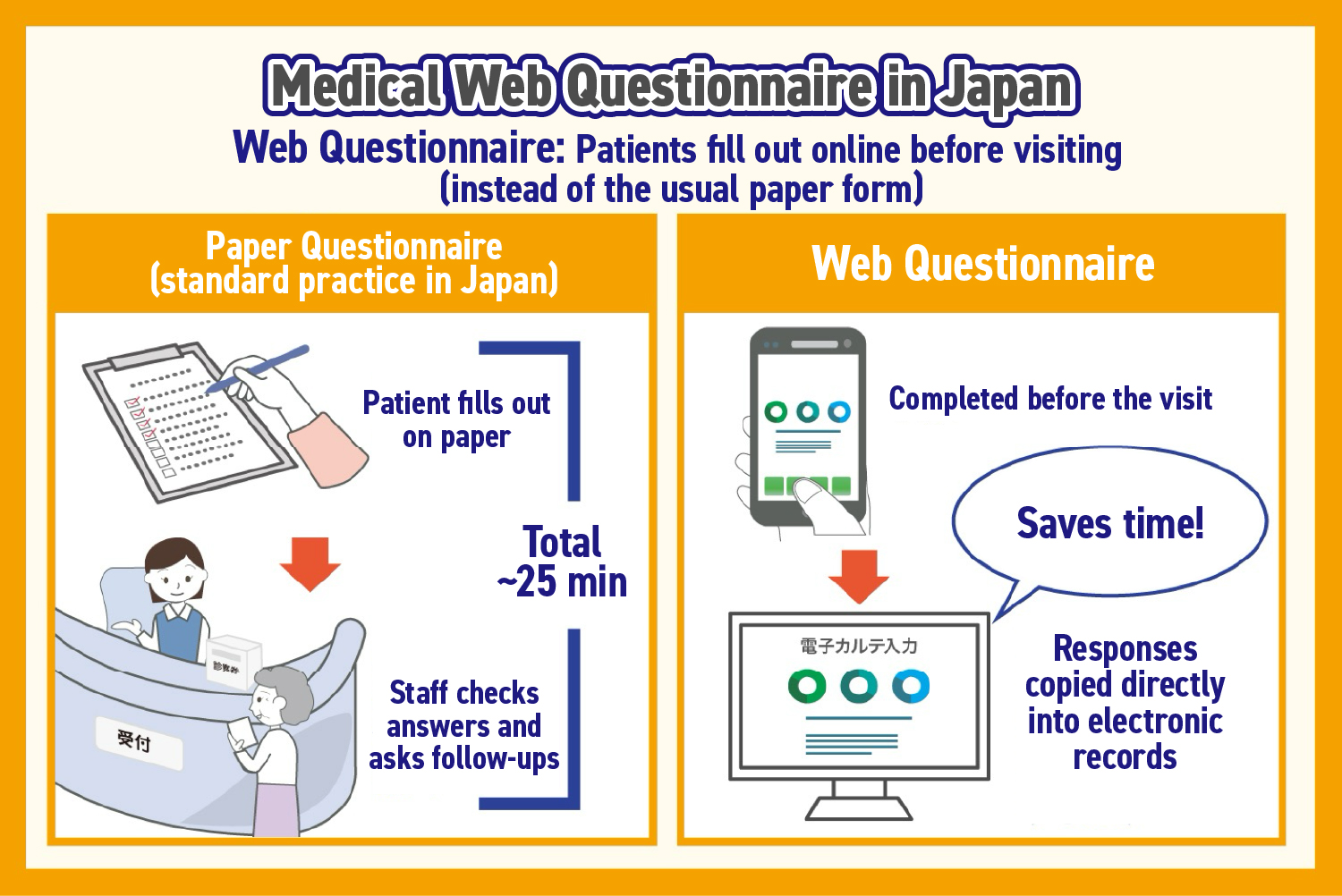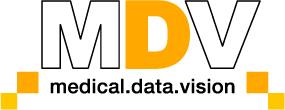At Japanese medical institutions, the first step of care is always the monshin (問診), or medical interview. This process helps doctors identify what kind of illness a patient might have and guides the consultation. Traditionally, patients completed this by filling out a paper questionnaire after arriving at the clinic or hospital.
However, since the COVID-19 pandemic, attention has shifted toward medical web questionnaires (Web monshin). These systems allow patients to enter their information before coming in, which both reduces waiting times and lowers infection risk.
In this article, we will explain what medical web questionnaires are, how they differ from AI-driven ones, their features, benefits, drawbacks, and what to consider before adopting them in Japan.
What is a medical web questionnaire?

In Japan, an medical web questionnaires refers to a form that patients complete via the web before visiting the clinic. Instead of filling out paper sheets at reception, patients can use their smartphone, PC, or a tablet installed at the medical institution.
According to a survey by Nikkei Medical Online, only 5.2% of clinics had already adopted or were planning to adopt such systems, while 27.6% said they were considering adoption depending on government subsidies and regulations. (*)
During the pandemic, Japanese clinics often needed to triage patients suspected of COVID-19 or fever cases before they entered the facility. Web questionnaires became especially valuable here, since they allowed basic screening before the patient physically arrived.
Additionally, during the COVID-19 pandemic, medical institutions saw an increased need to conduct pre-reception interviews via phone or other means for patients suspected of having a fever or COVID-19 symptoms. This allowed for triage (sorting patients based on severity and urgency of treatment). As a result, more medical institutions adopted web-based medical interviewing, enabling patients to complete the process before visiting.
Unlike in other countries, in Japan the standard process is still filling in a paper questionnaire at the clinic itself. The online version simply digitalizes that pre-visit paperwork; it is not yet part of a broader telehealth ecosystem.
*Source: Nikkei Medical, “13th Survey: [Asked 286 Practicing Physicians] Awareness of ICT Tools Gaining Attention During the COVID-19 Pandemic (Part 2).”
https://nm-kaigyo.nikkeihr.co.jp/career_labo/karte_enquete/013/, (Accessed on 2023-03-27).
Differences Between Paper and Web Questionnaires
Medical web questionnaire and paper-based interviewing differ in the time required for reception procedures. With traditional paper-based interviewing, it could take a total of approximately 25 minutes to complete the reception process, as outlined below.
- Patient completes the paper questionnaire: Approximately 2 to 5 minutes
- Staff reviews the responses and asks the patient additional questions if necessary: Approximately 2 to 10 minutes
- Staff enters the responses into the medical record: Approximately 2 to 10 minutes
On the other hand, web-based medical interviewing reflects the questionnaire results in the web system, allowing them to be copied and pasted into the electronic medical record. This process saves time compared to direct data entry
What is an AI medical questionnaire?
AI questionnaires also use smartphones or tablets, but the questions are generated dynamically by AI according to the patient’s symptoms. Based on the input, the AI can suggest possible conditions and help the patient decide whether they should go to a hospital at all.
These results can also be transferred to the patient’s record, further reducing staff workload. However, because AI-driven questionnaires tend to ask many detailed questions, they may feel burdensome for elderly patients or those unfamiliar with digital devices.
Key Differences: Web vs. AI Questionnaires
Web questionnaire: Content is created and customized by the medical institution (with help from the system provider). Doctors decide what questions are most useful.
AI questionnaire: The system automatically generates questions based on reported symptoms, and AI infers possible illnesses.
Features of Web Questionnaire Systems
Key features of web-based medical interview systems include reduced costs for managing questionnaires, shorter reception processing times, and smoother consultations. Traditional paper-based questionnaires required securing storage space, specialized equipment, and files for management. However, with a web-based medical interview system, questionnaires are managed digitally, eliminating the need for physical storage. Additionally, past questionnaires can be quickly retrieved using the search function.
By implementing a web-based medical interview system, as previously mentioned, it is possible to reduce the time required for patients to complete questionnaires, staff to review responses, and input data into electronic medical records. One significant feature of web-based medical interviews is that the questionnaire content can be customized by the medical institution, making it easier for physicians to obtain the necessary information for consultations and facilitating smoother diagnoses.
Points to consider when introducing such systems
Here are three key points to consider when implementing a web-based medical interview system.
- Choose a user-friendly system
- Select a system with robust support
- Opt for a system with high customization capabilities
- Implement or update web pages (building pathways to the web-based medical interview and managing operations)
Ease of Use
One of the purposes of implementing web-based medical interviews is to facilitate smoother consultations. Therefore, it is important to choose a system with an easy-to-navigate interface and clearly displayed inputted questionnaire content.
Level of Support
When implementing a web-based medical interview system, various issues may arise before the system operates smoothly. Therefore, it is essential to select a vendor with a robust support system. For example, check whether they offer free consultations before implementation or provide lectures and training sessions for staff. Ensuring these support services are in place can help address any issues quickly after implementation.
Customizability
When implementing a web-based medical interview system, pay attention to its customizability. Some systems allow for adding or removing questions. With such a system, you can freely make adjustments even after implementation to address areas that need improvement.
Typical Workflow
The process of web-based medical interviewing can be summarized as follows.
- Patient completes the questionnaire before their visit
- Patient completes the questionnaire after their visit
- Staff transfers the questionnaire results to the electronic medical record
When answering before the visit, patients complete the questionnaire in advance using their smartphone or tablet. When answering after the visit, patients use a tablet provided within the medical facility to complete the questionnaire.
Both the questionnaire results completed before the visit and those completed after the visit are reflected in the web-based medical interview system, allowing staff to transfer and incorporate them into the electronic medical record.
Why they help consultations run more smoothly
With web-based medical interviewing, where patients complete their questionnaires in advance using smartphones or tablets, the burden on medical reception staff can be reduced. Additionally, since the questionnaire content can be customized, physicians can easily obtain the necessary information for consultations, enabling smoother medical examinations.
When implementing a web-based medical interview system, choose one that is easy to operate and comes with robust support.







